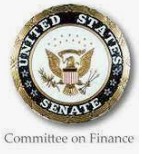
The IRS extended the transition period for taxpayers to perfect their refund claims for R&D Tax Credits through January 10, 2024. Taxpayers are now provided 45 days to perfect a research credit claim for a refund prior to the IRS’s final determination on the claim, according to the IRS.
The transition period was initially listed at 30 days and was set to expire on January 10, 2023.
An R&D tax credit provides businesses with a tax benefit for conducting qualified research activities. When submitting an R&D claim for refund, it’s essential to provide specific details and supporting information.
Information Required for Submitting an R&D Tax Credit Claim
According to the IRS, to claim a Section 41 R&D tax credit refund, taxpayers are required to provide the following information:
Identify all business components to which the R&D credit relates to for that tax year
Identify all qualified research activities performed, name the individuals who performed each activity, and list the information each individual aimed to discover
Provide the total qualified employee wage expenses, total qualified supply expenses, and total qualified contract research expenses for the claim year
Taxpayers can submit their R&D tax credit claim by attaching IRS Form 6765 Credit for Increasing Research Activities to their amended return and a statement with the above information. The above information may sound like a lot, but with the proper assistance, it is very manageable.
Benefits of Claiming the R&D Tax Credit
Claiming the R&D tax credit provides numerous benefits, including:
Increased cash flow and significant savings
Reducing your Federal tax rate
Federal and State dollar-for-dollar income tax reduction
Ability to claim the credit for open tax years going back 3 years
Qualifications for Businesses to Claim the R&D Tax Credit
If your business paid for any of the below, it might qualify for the tax credit:
Employees or contractors performing qualified research
Be aware that qualified research is a much broader concept than most people think; i.e., it’s not just chemists and their beakers.
Consumable supplies during development
Cloud computing services related to development operations
Get Help From The Experts
At Source Advisors, we can help determine the specific R&D tax credit rules that apply to your fact pattern and guide you through the filing requirements.
If you need assistance with a Research Credit refund claim or claiming the Credit on your current tax year return, please contact us.
Post written By Deborah Roth, Practice Leader Source Advisors.
Have a question? Contact Eric Larson for an introduction to Deborah Roth.


















Recent Comments